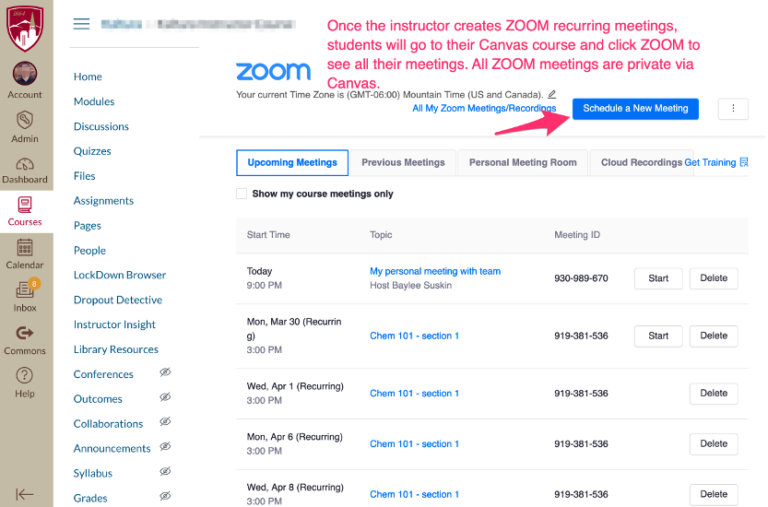Update 4/9/2020: DU IT has released a how-to guide for using Zoom securely.
By Christina Paguyo, Director of Academic Assessment and Karen Swanson, Director of Faculty Learning and Scholarships
Editor’s note, 4/1/2020: On March 26, 2020, Zoom released a system-wide change to address Zoom “bombing” by changing the screen sharing default to “host only”. If you would like to allow others to share their screens, you will need to change your settings. See here for more information.
The increased use of Zoom for online learning has also increased the opportunity for un-invited guests. You may have heard the term “Zoom trolls” in which an individual finds a Zoom link either online or in social media and joins the meeting to be mischievous. How do we prevent Zoom trolls from accessing online courses? Here are a few tips to consider:
USE ZOOM IN CANVAS: This is the best way to stay safe and ensure there are no interlopers in your Zoom session. These links are private and only accessible to you and the students in your course because Canvas is password protected.

How to create Zoom meetings within your Canvas course:
SHARE ONLINE ETIQUETTE: When teaching online, here are suggestions about online etiquette to share on Day 1 with your students and place in your syllabus:
- Do not share our course Zoom link with anyone.
- Mute your microphone when you join class. As the instructor, I will mute everyone once instruction begins.
- Please use the chat box to communicate during class so that we are not talking over each other.
- I will ask for a volunteer to monitor the Chat Box during class to bring things to my attention.
- You may change your background to anything that is appropriate and not distracting to our learning experience.
- You may not change your name as it appears on your Zoom window.
- If your behavior interrupts the learning of others, you will be removed from the room.
ADDITIONAL TIPS: Here are some pro-active strategies to avoid problems while teaching online:
- Manage Who Shares Screens: As the professor, you can decide who has permission to share screens.
- Remove People: From the “participants” icon in your Zoom control bar, you can hover the cursor over a participant’s name, and several options will appear, including remove. Click on “remove” to kick someone out of the meeting.
- Lock a Meeting: No additional participants can enter your class when you follow these steps: https://keepteaching.usc.edu/lock-a-meeting/
AGAIN: If you schedule your Zoom meeting through your Canvas shell, these issues should not be a problem.
Learn more about teaching with ZOOM at https://otl.du.edu/knowledgebase/zoom/
For more information about how to keep your Zoom meetings outside of Canvas safe and media publications about Zoom trolls, see these links:
Keeping the Party Crashers from Crashing Your Zoom Event
When Online Trolls Show Up in Class, Should Professors be Able to Ban Them?



